|
|
|
“I am SetraAmuthep, he who opens the ways. The undying Pharao extends his greetings to the scholars and warriors, the merchants and emissaries. No greetings does the undying Pharao extend to the unworthy and slaves, the retainers of the nameless one and to them who have come to steal the treasures of Heshrar.” This page belongs to the subject area “egyptians”. The beginning would be here: Egyptians |
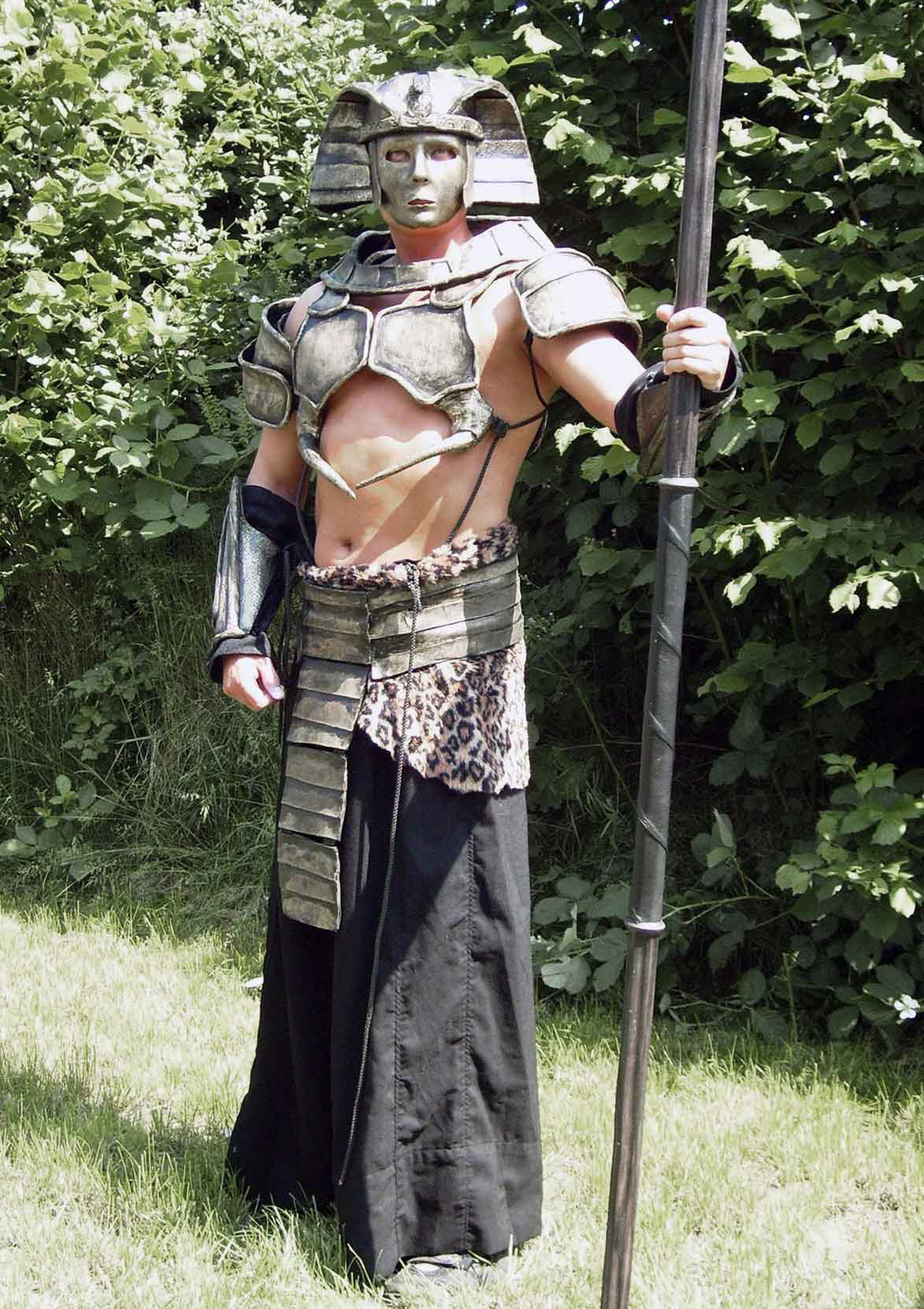 |
|
2007, 2009. Skarabäus- campaign. The NPC wears foam armour during the whole game and is supposed to interact with the players instead of chasing them around. Thatīs why the outfit mustnīt look too much like “Letīs make tracks. At once”. What indicates “egyptian”? |
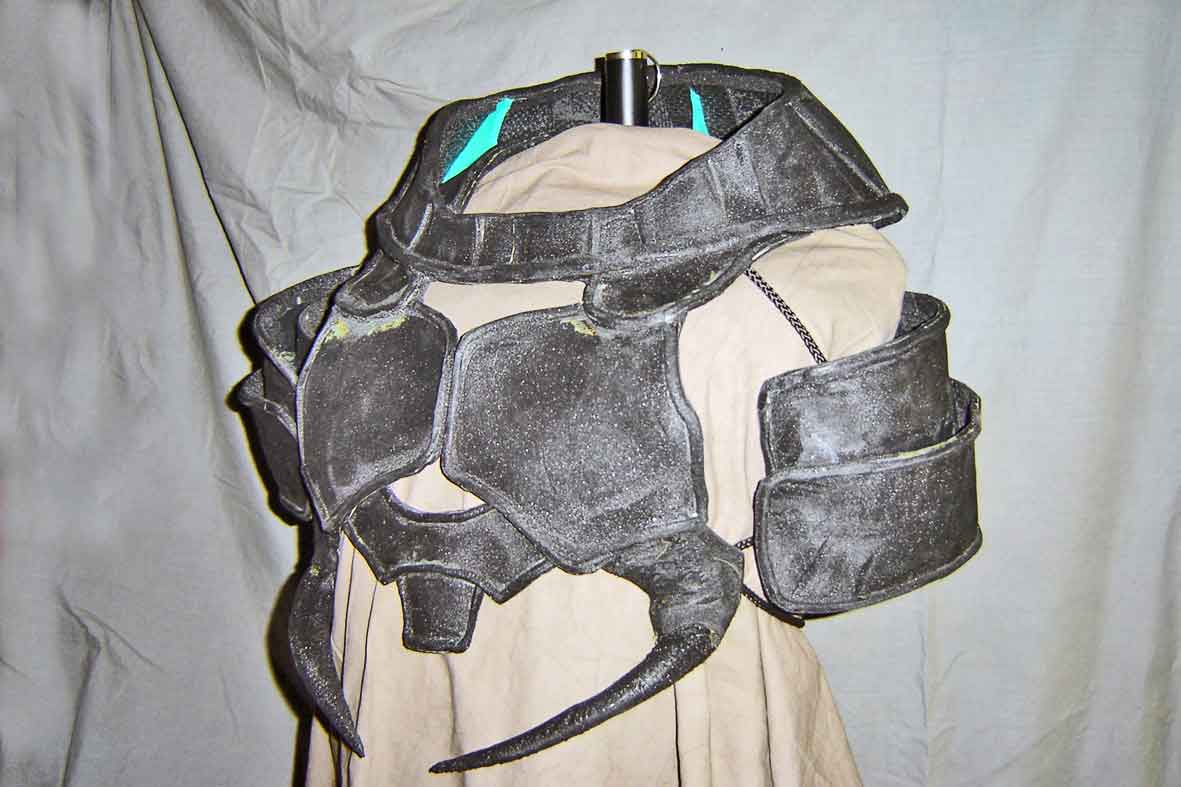 |
||||||
|
Above: Construction of the harness. The cords that hold the armpieces cannot be glued; they have to be sewn on pieces of cloth to create sufficient contact face. Glue: Pattex. Foam is not tearproof. Every part of the armour that is subject to stress is plastered with cloth from the underside. Only the combination of cloth/ glue/ foam is sufficiently durable. Every plate was furnished with a thin ledge which helps to create the impression of “metal”. The surface was treated with a soldering iron before painting. The connecting piece on the bottom is removable (velcro strips). The green pieces visible in the collar are remnants of the auxiliary construction made of cheap camping mats necessary to hold the desired shape while forming it. It is cut out again when the piece is finished. The collar is a real 3d- construction (meaning if it was cut off and spread it couldnīt lie flat) which demands that you know what the material can do and what not. Experimentation is the recommended way. |
||||||
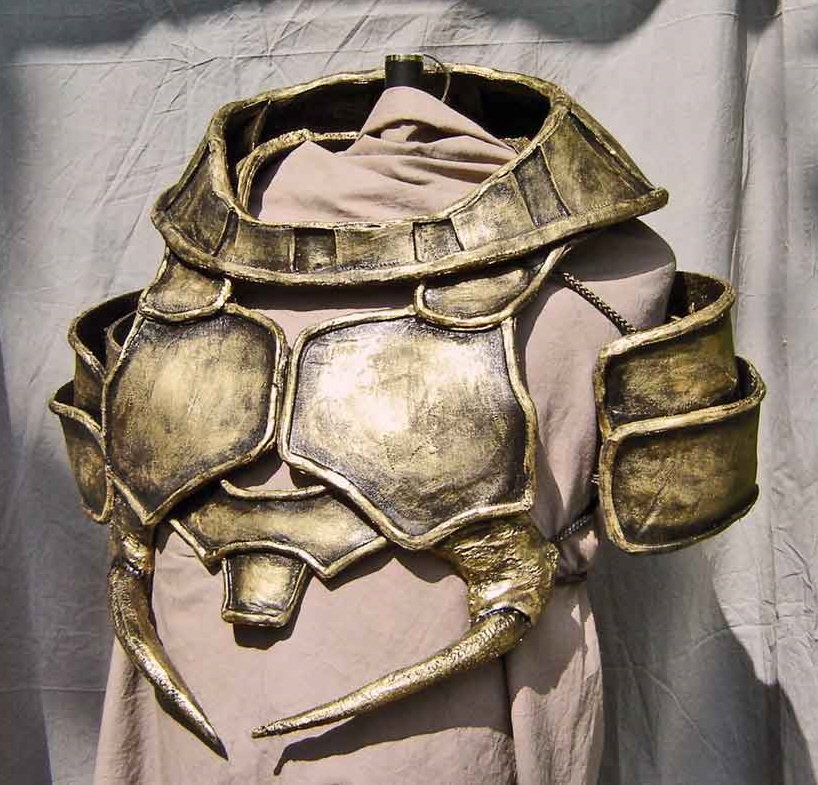 |
||||||
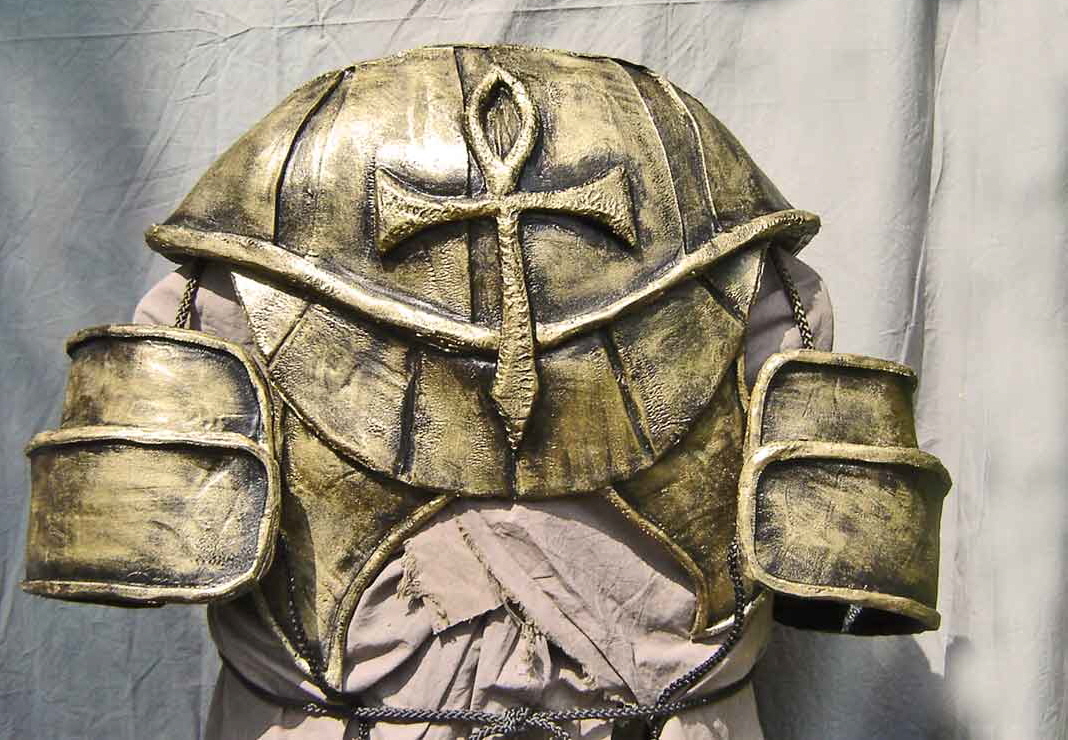 |
||||||
|
Above: Painted (acrylics). Ground black, drybrush metal, then inking in all recesses, then highlights. See where the black “patina” was applied. No latex was used which means the armour is odor- neutral and non-sensitive to heat. |
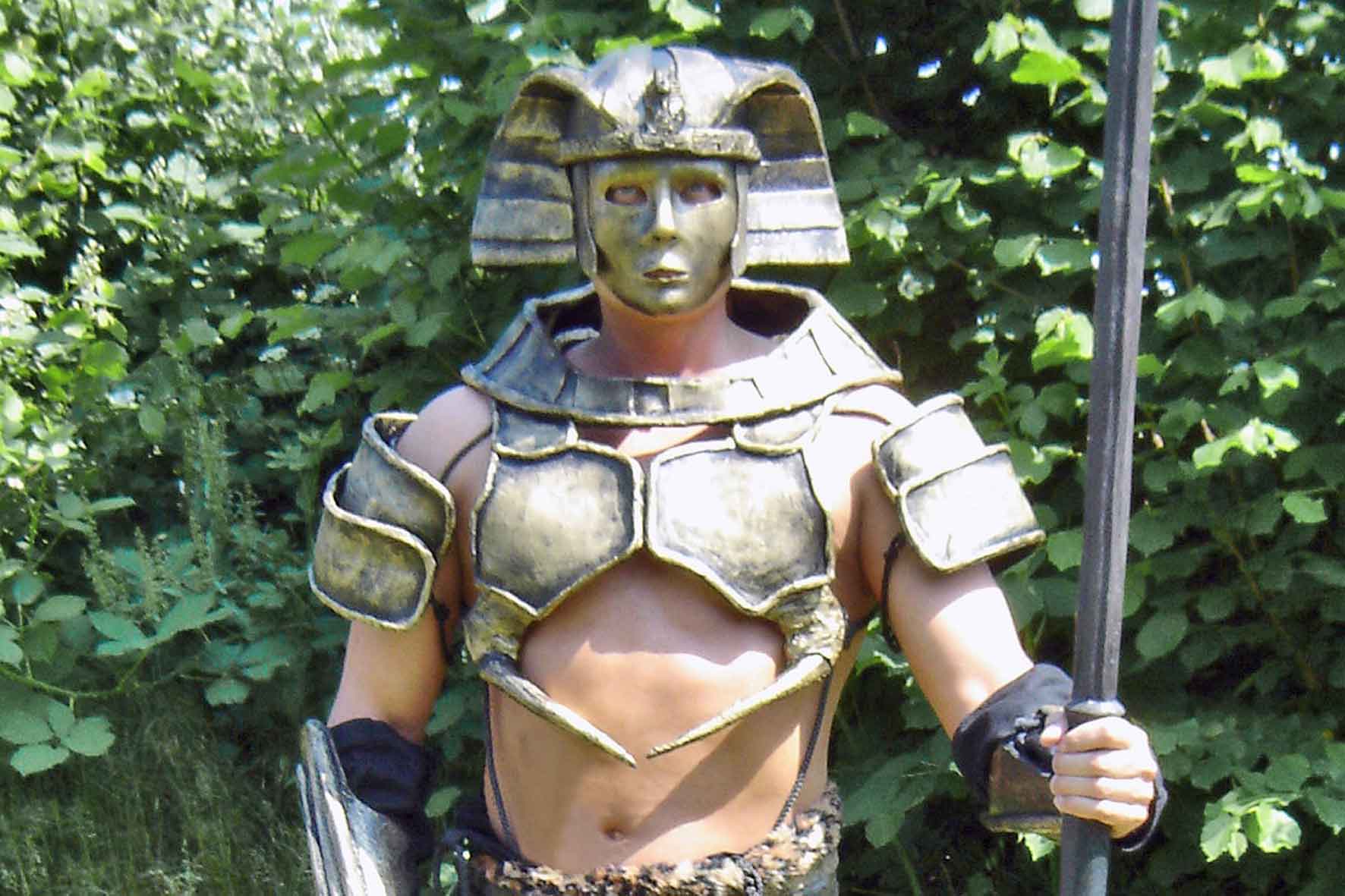 |
|||||||
|
Above: The collar shall resume and continue the lines of the helmet without impairing the headīs freedom of movement. A compromise is not acceptable because each contact with the collar will dislocate the helmet (learned that the hard way; see also “fails”...). The priority is with the helmet, the collar has to be built with apropriate clearance. Notice that the plates on the upper arms are secured against folding up by cords under the arms. Minimized contact surface |
|||||||
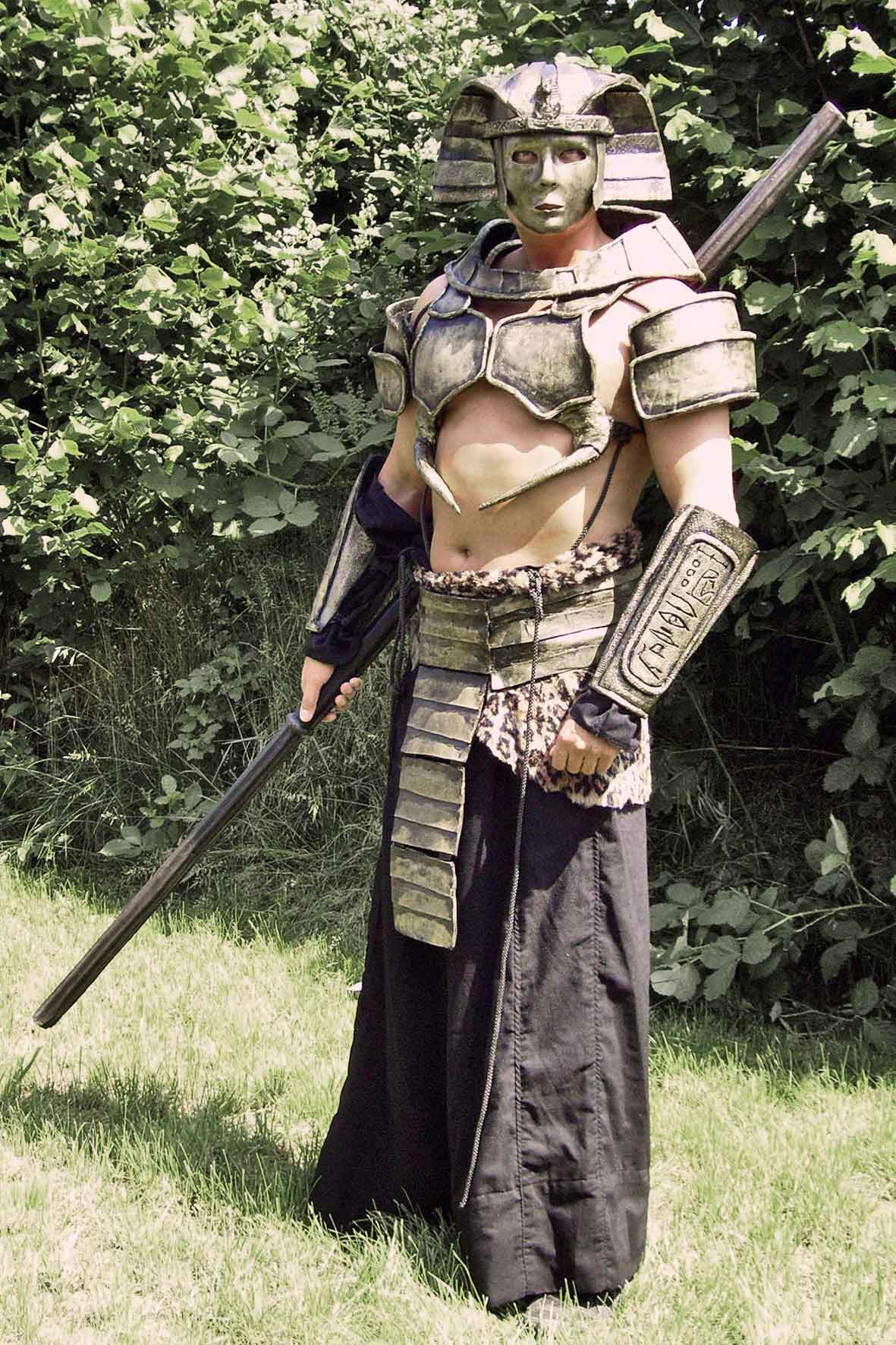 |
|||||||
 |
|||||||
|
Above: 2 variants of the costume- necessary as long as we canīt play in a real desert. See on the right the assembled plexus-plate that serves to fill the space between the “horns”. The trousers are called “hakama” (superwide skirtlike japanese trousers) and are much more versatile than a kilt. For Egyptologists: |
| [Home] [Deutsch] [English] [about me] [whatīs new] [Contents] [about monsters] [faqs] [other sites] |